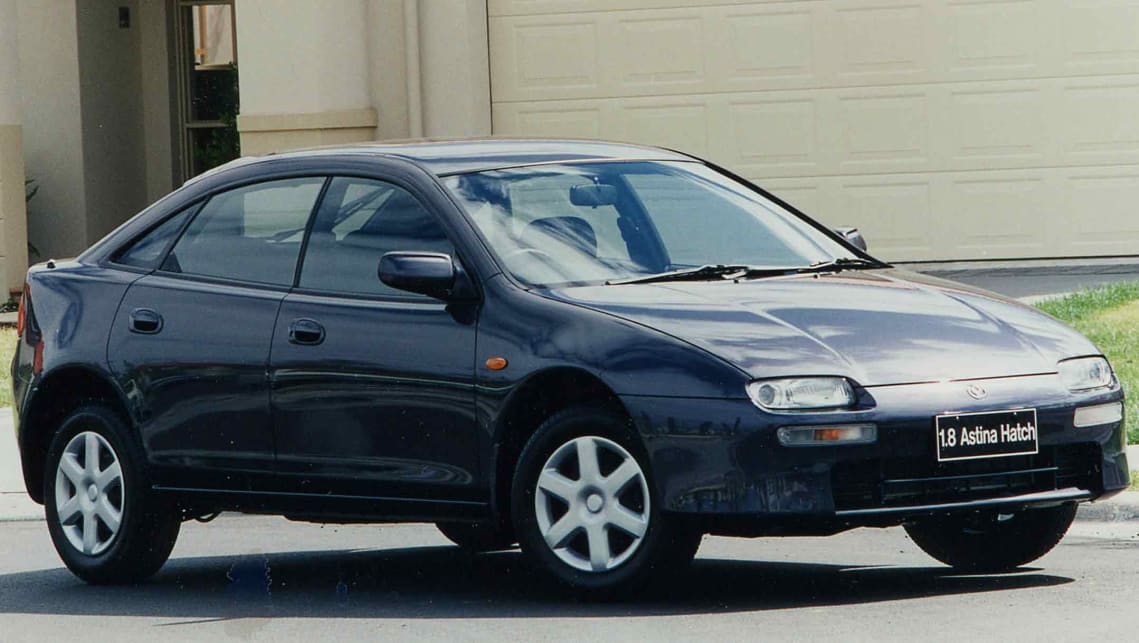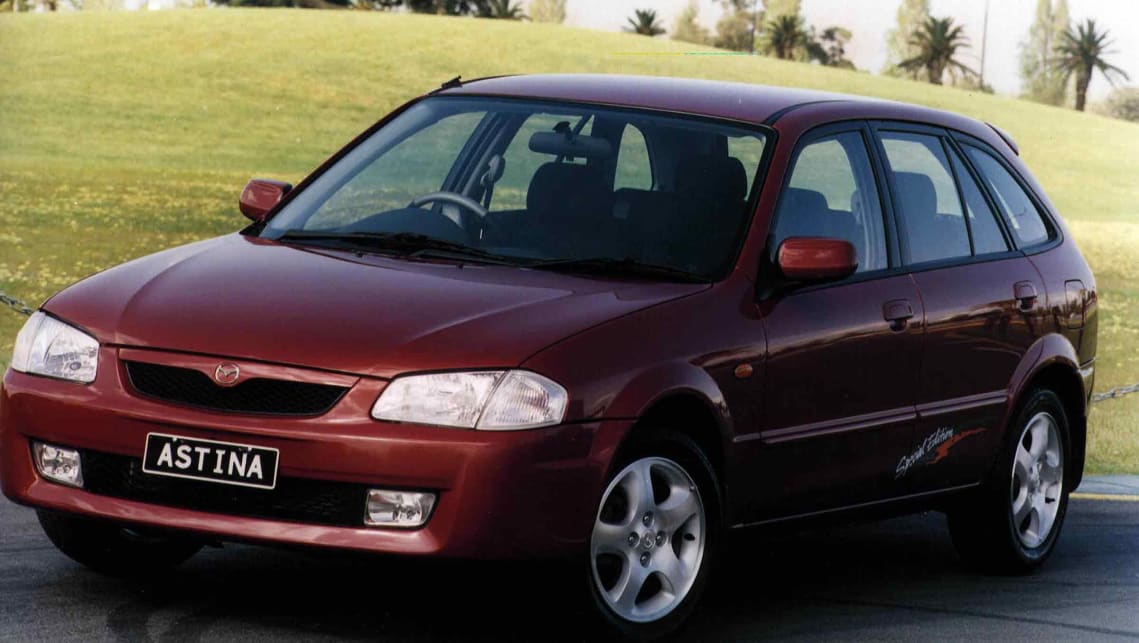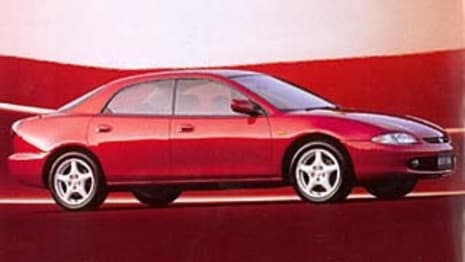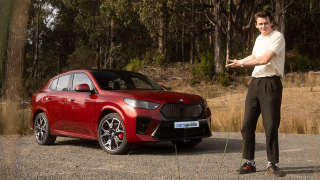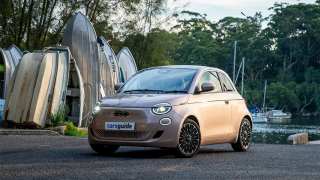
Used Mazda 323 review: 1994-2003
- Mazda 323
- Mazda 323 2002
- Mazda 323 1994
- Mazda 323 1995
- Mazda 323 1996
- Mazda 323 1997
- Mazda 323 1998
- Mazda 323 1999
- Mazda 323 2000
- Mazda 323 2001
- Mazda 323 2003
- Mazda 323 Reviews
- Mazda Reviews
- Mazda Hatchback Range
- Hatchback
- Mazda
- Used Car Reviews
- Family Cars
What we like
- Well built and long lasting
- Simple to drive
- Handles reasonably well for its class and age
What we don't
- Doesn't like rough back roads
- Sun-damaged paint and interior can be a problem
- Less-common spare parts are becoming scarce
What we like
- Well built and long lasting
- Simple to drive
- Handles reasonably well for its class and age
What we don't
- Doesn't like rough back roads
- Sun-damaged paint and interior can be a problem
- Less-common spare parts are becoming scarce
Mazda first sold cars in Australia in the 1960s and was a minor player for quite a few years as Australians were very suspicious about cars coming from Japan in those days. How things have changed.
The Mazda 323 first arrived as an interesting little rear-wheel-drive hatch in February 1977. These are very scary as used cars nowadays, probably because most have rusted away, they were shockers when the tin-worm took hold.
Despite that bad start Mazda persisted and the 323 came into its own with a new generation model launched in August 1994, which is where we pick them up in this used-car checkout. The Mazda 323 had become became a front-wheel-drive in 1980 as small rear-drivers were being phased out by all makers. Interestingly, Ford Laser is a Mazda 323 with minor changes, they were assembled in Sydney and not finished to quite the same high standard. To this day, the Mazdas hold a higher regard.
Mazda's name really started to lift, when the 323 was replaced by a new model called the Mazda3 in 2004 - indicating that Mazda saw it as being in the 3 Series BMW class - well almost. The humble little 323 benefited from this push to a stronger image and plenty are on the used-car market to this day. Obviously they are getting on in years, but get yourself a good one and you can be sitting pretty in a well built, long lasting machine.
The 323 is simple to drive and handles reasonably well for its class and age. It has good ride comfort on most roads, but doesn't like rough and ready back roads - and some suburban roads in Australia can fall into this category. Try the little Mazda on these on your pre-purchase test drive.
The Mazda 323 was offered as a four-door sedan, four-door hardtop, five-door hatchback and a station wagon. The sedan from 1994 until 1996 continued to use the old body, first released in 1989.
Interesting attempts were made to push Mazda 323 into the luxury segment. Between 1994 and 1998 it even came with the option of a V6 engine. That Mazda 323 V6s were overpriced but are worth hunting down on the used market as the engine is delightfully smooth - though in the manner of European cars it does need lots of revs to get the best from it.
Four-cylinder engines in the Mazda 323 have capacities of 1.6 and 1.8 litres, the 1.6 being by far the most common.
Gearbox options are five-speed manual and either three or four-speed automatic transmission. The three-speed auto was only used on the lower cost models and only until 1996, when it was replaced by a four-speed. Around town the three-speed works well enough, on the open road the engine is pretty busy.
Mazda's 323 is reasonably easy to work on. As is often the way with Japanese cars it's sometimes best to remove the complete engine/ transmission assembly when doing anything more than the more basic of repair work.
Good amateur mechanics can do smaller jobs, but as always we recommend anything concerning safety should only be done by professionals.
Because of the latter day sales success, the Mazda dealer network is widespread and there are dealers in most country towns of any size.
Spare parts are generally readily available, though some less-common bits for the oldest models are starting to become scarce.
Insurance premiums are moderate and we don't know of any of the major insurers that differentiate between the four and six-cylinder engines.
Ford's Laser, sold from 1981 till 2002, was heavily based on the Mazda 323, though not the six-cylinder engine, offering a further source for spare parts. Laser was built in Sydney and quality wasn't as high as in cars made in Japanese, so beware second-hand bits.
What to look for
Check the engine's cam-drive belt has been replaced according to the servicing schedule. Failure to do so can cause expensive engine damage.
Be cautious of engines that blow smoke from the exhaust, especially under hard acceleration. Let it idle for about a minute before carrying out this test.
Manual gearboxes should be light and simple in their operation. Any reluctance to go into a lower gear should be treated as a likely problem.
Be wary of an automatic transmission that is either reluctant to change, too eager to change, or which is harsh when it does change gears.
Sun-damaged paint, at its worst on the horizontal surfaces, is common in Mazda 323s that have spent most of their life parked outside.
The interior trim generally stands up well. Again, sun damage, this time on the top of the dash, can be a problem.
Rust is unusual in the Mazda 323s of this era. To be on the safe side check the lower areas of the car's body, around the front and rear windscreens and the fuel filler cap.
Drive the car with the steering on full lock in one direction then the other and listen for clicking sounds from the front-axle universal joints.
Pricing
| Year | Price From | Price To |
|---|---|---|
| 2003 | $2,530 | $5,170 |
| 2002 | $1,980 | $4,510 |
| 2001 | $1,820 | $4,070 |
| 2000 | $2,310 | $4,070 |
| 1999 | $2,310 | $4,070 |
| 1998 | $2,090 | $4,290 |
| 1997 | $1,980 | $4,290 |
| 1996 | $1,980 | $4,400 |
| 1995 | $2,090 | $4,070 |
| 1994 | $1,980 | $4,070 |
Pricing guides
Range and Specs
| Vehicle | Specs | Price* | |
|---|---|---|---|
| (base) | 1.6L, ULP, 3 SP AUTO | $2,090 – 3,300 | 1994 Mazda 323 1994 (base) Pricing and Specs |
| Protege | 1.6L, ULP, 5 SP MAN | $2,310 – 3,630 | 1994 Mazda 323 1994 Protege Pricing and Specs |
| Astina | 1.8L, ULP, 4 SP AUTO | $2,310 – 3,630 | 1994 Mazda 323 1994 Astina Pricing and Specs |
| Astina SP | 1.8L, ULP, 5 SP MAN | $2,640 – 4,070 | 1994 Mazda 323 1994 Astina SP Pricing and Specs |
$1,820
Lowest price, based on third party pricing data


